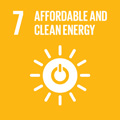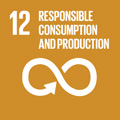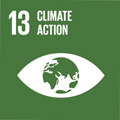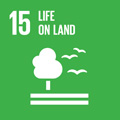- Docente: Luca Lambertini
- Credits: 8
- SSD: SECS-P/01
- Language: Italian
- Teaching Mode: In-person learning (entirely or partially)
- Campus: Bologna
- Corso: First cycle degree programme (L) in Economics, Markets and Institutions (cod. 8038)
-
from Sep 18, 2024 to Dec 16, 2024
Learning outcomes
Economic growth and globalization are accompanied by (or imply) undesirable consequences concerning the environment and the residual volume of natural resource of the planet. The course illustrates (i) the environmental implications of production in advanced economic systems, (ii) the negative effects of unequal growth and (iii) possible short and long run remedies, in terms of both economic policy instruments and the development of clean technologies based on renewable resources. As a result, students will acquire the instruments needed for a critical assessment of the main elements of the current debate in this field.
Course contents
1) Genesis and evolution of environmental economics
2) Sustainable growth
3) The optimal level of pollution
4) The Coase theorem and Pigouvian taxation
5) Environmental standards and pollution rights
6) Evaluting environmental damage
7) Market power, environmental policies and green innovation from Cournot to Porter
8) Renewable risources: the optimal harvest and the Ramsey rule
9) Extinction of species
10) Non-renewable resources: the Hotelling rule
11) Economic growth and the preservation of natural resources
Readings/Bibliography
D.W. Pearce e R.K. Turner, Economia delle risorse naturali e dell'ambiente, Bologna, Il Mulino (Economics of natural resources and the environment, Harvester-Weatsheaf)
The lecture slides are available on line (in particular those concerning topic (11), not contained in the texbook)
Additional material - if any - will be delivered in class
Teaching methods
Class lecture with slides and video recording, whenever necessary
Assessment methods
Written examination on the material illustrated in class. The exam can be taken either in full or through the two partials. In both cases, the text contains 11 multiple choice questions and 4 open ones. Candidates must answer any 2 of these 4. Every correct answer to a multiple choice question grants 1 point, while the answer to an open question grants at most 10 points.
The candidates choosing two carry out the exam in two steps may fulfil the requirement for one of the two partial examinations through an essay on a topic agreed upon with the lecturer. That topic must be compatible with the material pertaining to the programme concerning that specific partial examination.
The maximum possible score is 30 cum laude. The grade is graduated as follows:
<18 failed
18-23 sufficient
24-27 good
28-30 very good
30 cum laude excellent
Teaching tools
The slides used during the course will appear in its web page. The material for essays will be chosen on a case by case basis.
Office hours
See the website of Luca Lambertini
SDGs




This teaching activity contributes to the achievement of the Sustainable Development Goals of the UN 2030 Agenda.
